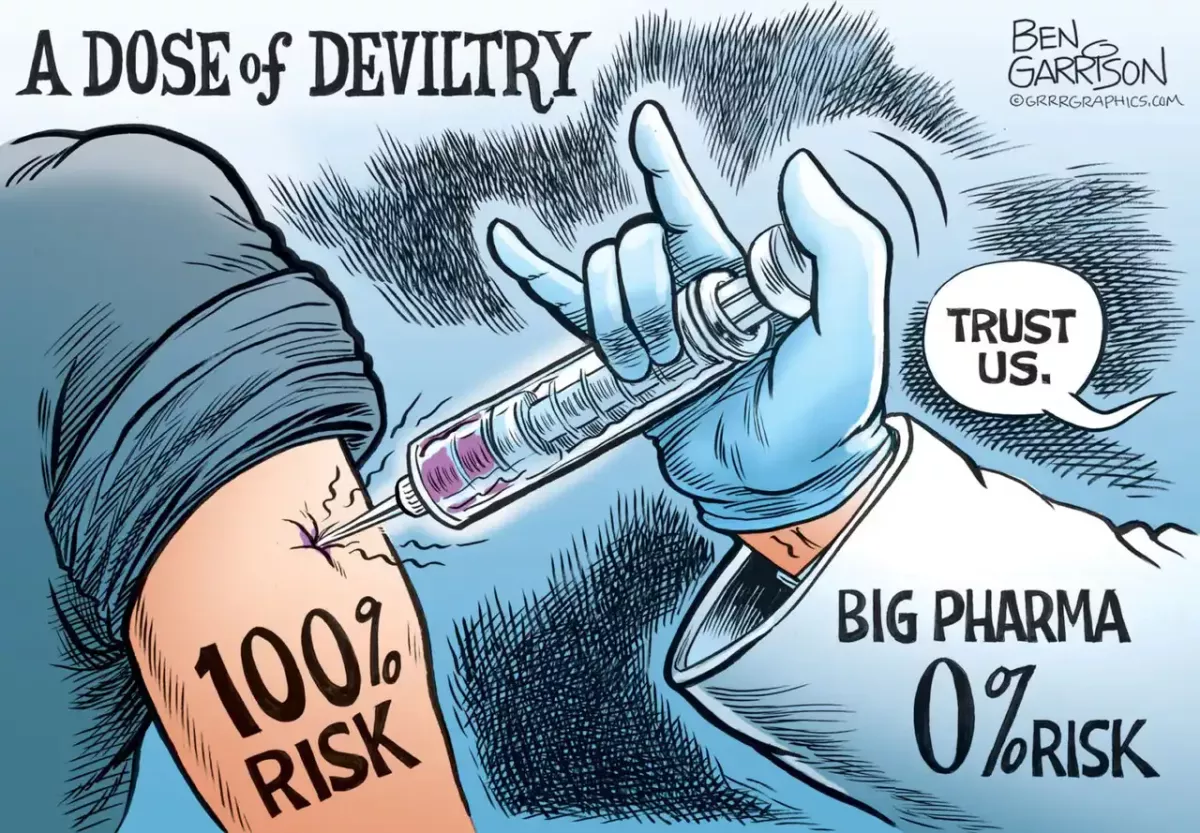Clinical Data Destroys AstraZeneca
1 in 35 had a Serious Adverse Event!
By Tea Lynn Moore
During the darkness of lockdowns, AstraZeneca, the company whose CEO was awarded British knighthood for the creation of its vaccine, whose scientists received an emotional standing ovation at Wimbledon, whose vaccine co-creator had a Barbie doll modelled after her, whose vaccine was even promoted by the king of vaccines himself, Bill Gates, appeared to be the saviour we had all been waiting for. Then, it all went downhill. First slowly and silently, then all at once.
Amid a long history of safety concerns, Oxford’s AstraZeneca vaccine “Vaxzevria” has been officially withdrawn from the global market. Let’s take a quick look back to understand what happened.
AstraZeneca’s COVID-19 vaccine was first approved in Canada on February 26, 2021. Within weeks, however, concerns grew about the vaccine’s safety when dozens of countries suspended its use after unusual blood clots were detected in a number of immunized people.
Don’t lose touch with uncensored news! Join our mailing list today.
The European Medicines Agency (EMA) eventually admitted that there was a “clear” link between AstraZeneca’s COVID vaccine and a form of potentially deadly blood clots that had never been known to occur naturally. The condition, coined thrombosis with thrombocytopenia syndrome, results in blood clots combined with a low level of platelets. Eventually, at least 26 countries suspended the AstraZeneca vaccine. Some countries began only offering the shots to people over age 40, since the condition primarily affected young adults. Guillain Barré Syndrome was also found to be associated with the vaccine.
Then came reports that the vaccine didn’t even work to prevent transmission. A paper by the prestigious Oxford University Clinical Research Group, published in The Lancet (Chau et al.), found that, when infected with the dominant Delta variant, AstraZeneca-vaccinated individuals carried 251 times the load of COVID-19 viruses in their nostrils compared with the unvaccinated.
AstraZeneca was found to have used “outdated and potentially misleading data” that overstated the effectiveness of its vaccine, according to The Data and Safety Monitoring Board in their report to the National Institutes of Health (NIH).
Despite all this evidence, AstraZeneca sold almost $4 billion US worth of the injectables worldwide in 2021.
This brings us to May 7th, 2024, when “Vaxzevria” was officially withdrawn from the global market.
The removal of its authorization came just weeks after the company admitted in a UK court document that its shot can cause thrombosis with thrombocytopenia syndrome. The company had originally denied a causal link.
AstraZeneca did not cite the admission as contributing to its decision. Instead, it stated that there was now an “oversupply of updated vaccines.” AstraZeneca’s admission, revealed in a UK high court, came to light through a lengthy class action legal battle in the UK in April. That case involved claims of injuries and deaths in the UK allegedly caused by their vaccine. The company has also faced a mountain of lawsuits worldwide.
This lawsuit is compounded by AstraZeneca’s most recent Phase III two-year post-vaccine safety clinical trial study results, which are quite alarming.
In November 2023, the EMA published AstraZeneca’s mandated Phase III randomized, double-blind, placebo-controlled multi-center study. The study followed over 30,000 adult participants who received a placebo, or one to two doses of its Vaxzevria COVID-19 vaccine over the course of two years. The study defined a serious adverse event as a side effect that results in “death; immediately life-threatening; … hospitalization; persistent or significant disability; congenital abnormality or birth defect; an important medical event.” Out of the 21,587 participants who received a vaccine, 621 developed a serious adverse event (SAEs)—equating to a shocking 1 in 35 people! Additionally, 1 in 5 people sought or required medical attention after the vaccine (MAAEs). And 1 in 9 people had some form of adverse reaction (AESIs).

Results of AstraZeneca’s 2023 Phase III randomized, double-blind, placebo-controlled multi-center study. Severe Adverse events (SAEs) were monitored for up to 2 years. https://www.clinicaltrialsregister.eu/ctr-search/trial/2020-005226-28/results
Had all clinical studies been completed before the vaccine rollout, it never would have made it to market. Instead, under the guise of “Emergency Authorization,” a deadly product was injected into the arms of millions. Ultimately, safety is what should be a top priority in medicine. The Hippocratic Corpus says, “Practice two things in your dealings with disease: either help or do not harm the patient.” It seems the AstraZeneca vaccine did neither.
In a statement, AstraZeneca said: “Our sympathy goes out to anyone who has lost loved ones or reported health problems. Patient safety is our highest priority.” It’s unlikely that “sentiment” will ever be enough for its victims.















